I did my 400th Peloton spin class this morning! 30 min Classic Rock Ride with Matt Wilpers. 🎉
Look up.

We found this Thankful Tree on our walk and Mazie took the opportunity to add one.




Sidewalk poetry found walking from Carleton back to St. Olaf.



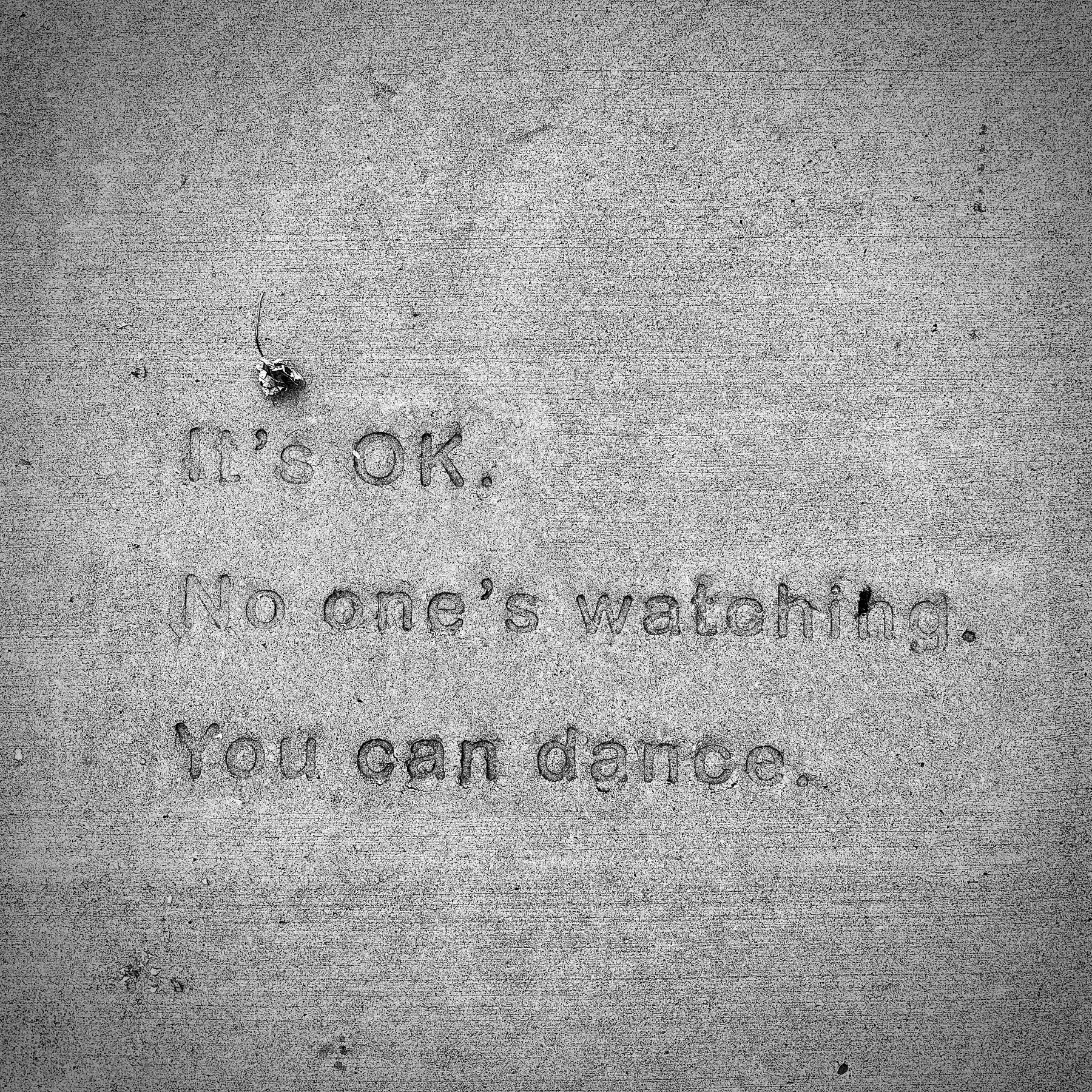
Homecoming Battle: Carleton Knights vs. St. Olaf Oles! 🏈



On Melby Yard at St. Olaf Homecoming and Family Weekend.

How I Find Links for the Weekly Thing
The most common question I’m asked about the Weekly Thing is how I find the links for each week’s issue. I’ve already shared how I build the Weekly Thing and the task management for each issue. Let’s dive into this part as well!
I find this the hardest question to answer because to me it is the same as asking “How do you learn about new stuff?” or “How do you read the Internet?” This isn’t something that I do for the Weekly Thing but is instead something I’ve always done. The Weekly Thing is a result of this activity. If you read my Weekly Thing introduction from 2017 you can see this. My link archive on Pinboard currently has 14,181 links with the first one dated August 2, 2005, twelve years before the first Weekly Thing! How terrifically nerdy is it that the first link is to the now defunct Make Magazine. 🤓
This article doesn’t cover the writing I do on my blog, or what shows up as my Journal, in the Weekly Thing. That is just my writing on whatever I blog about syndicated into the Weekly Thing.
Collecting and curating links that show up in the Weekly Thing isn’t a technical process like building it and there is no task management. However, there is a process and there are three distinct “actions”. This does not have to be a linear process. I can skip all the steps and jump straight to curating an article.
Collecting
New links, articles, and information is showing up all the time. It can arrive as an email, a link that a friend shared, or via some feed. It is very rare that I have the time to even give a cursory read of this stuff when it shows up so I tend to collect these links to review later. I’m an avid user of Safari Reading List for this. Adding something to Reading List is usually just a long press and I’m done. At most it requires two taps or clicks. Technically any “read it later” capability, which there are many, would work for this. I’m just using the one that is the fastest and easiest for the platforms I use.
The biggest issue most people have with “read it later” systems is that later never arrives. I had the same issue. This is one area where the process of publishing the Weekly Thing helps me. If I haven’t read it in that week I’m probably never going to read it and it gets deleted. These “read it later” queues can be infinitely long. For me, no link stays here for more than a week. Even if you aren’t publishing your links, I’d encourage the same process. An infinite “read it later” queue can be mentally exhausting.
The most important way that I keep up-to-date and identify links to read is Feedbin. Feedbin is a paid service that I use to subscribe to RSS feeds from various websites. I share my list of RSS subscriptions if you are curious. If a site refuses to share updates via RSS, I’m likely not going to see it. That is fine with me. The majority of sites do this, even though they may not advertise it that much.
Also, not all RSS feeds are a single website. Some aggregation services also create RSS feeds. One of my favorites like this is the Pinboard Popular feed. Since I also use Pinboard to store my bookmarks, I’m part of this feed. This listing of the most frequently bookmarked links is one of the ways that I pull in interesting links from this small community from around the Internet. It also allows me to get a filtered list of other sites. For example, I don’t follow Hacker News but many Pinboard users do. By watching Pinboard Popular, I’m getting the filtered view of Hacker News that just pulls the stuff that has resonated enough I might care to see it.
Lastly, I also subscribe to many newsletters. I share my list of newsletters, but that can be out of date and incomplete. I love the newsletter medium and find it a refreshing and relaxing way to learn and read.
Reading and Filtering
At various times I have gaps of time, or sometimes in the evening I may want to just explore. For me that usually involves looking at my Safari Reading List and grabbing something to check out. Now I have a bit of time and can dig in. This could be 5 minutes, or an hour with the iPad on the couch.
There is nothing fancy here other than reading and learning. If the article isn’t interesting, I delete the link from Reading List and move on. If it is interesting, I mentally note that and leave it to curate. Sometimes I’m not sure, and I’ll just leave it to revisit again.
Curating
The last thing after collecting a link and then reading and reviewing it is optionally curating it. For years curating for me just meant adding to Pinboard and then moving on. When I did a link blog I started using the “description” text in Pinboard to be a bit of a blog post. I extended that for the Weekly Thing and realized that I can easily use markdown in that description so I can have links, some formatting, and excerpts.
To curate I take the link from Safari Reading List, usually add a paragraph or two, possibly an excerpt, and add that to the description in Pinboard. I then delete it from Safari Reading List. That link is now in link archive permanently. To me this feels like an ever growing database of knowledge. I’d love to do more with this database and have some ideas on my “Someday, Maybe” list.
Going back to how I build the Weekly Thing I then pull this information via the Pinboard API and it becomes part of each issue. Pinboard allows me to add a tag to a link. If I want the link in the Featured section I add the _feature tag, and if it goes in the Brief list on the bottom I add _brief. Why the underscore? I use to tag my links in Pinboard with topics so the underscore was used to indicate these are “special” tags.
Summary
That should give you a feel for how I find links to include, and overall covers how I “read the Internet”. I’ve done something very similar to this for nearly two decades now.
You may be curious to see social media not referenced. I don’t get links from social media platforms because I don’t use them. Even when I did, I didn’t use it that way. The algorithms and advertising influence made me skeptical of why I was getting the link in the first place.
Lastly it is worth noting that the publishing deadline of the Weekly Thing can compress the reading and curating. Ideally this is all happening throughout the week and I pull each link through these steps in little bits. It is hopefully “just in time”. But if it is a particularly busy week I may end up on Thursday night with 20 links in my Reading List and nothing curated. That usually means I sit down and spend a couple of hours scanning, reading, and then curating. That is an effort but it is also critical to continuing the process of being a life long learner! 🧠
We had a fun time with hypnotist Chris Jones tonight at St. Olaf’s family weekend. There were many people hypnotized and doing interesting things.
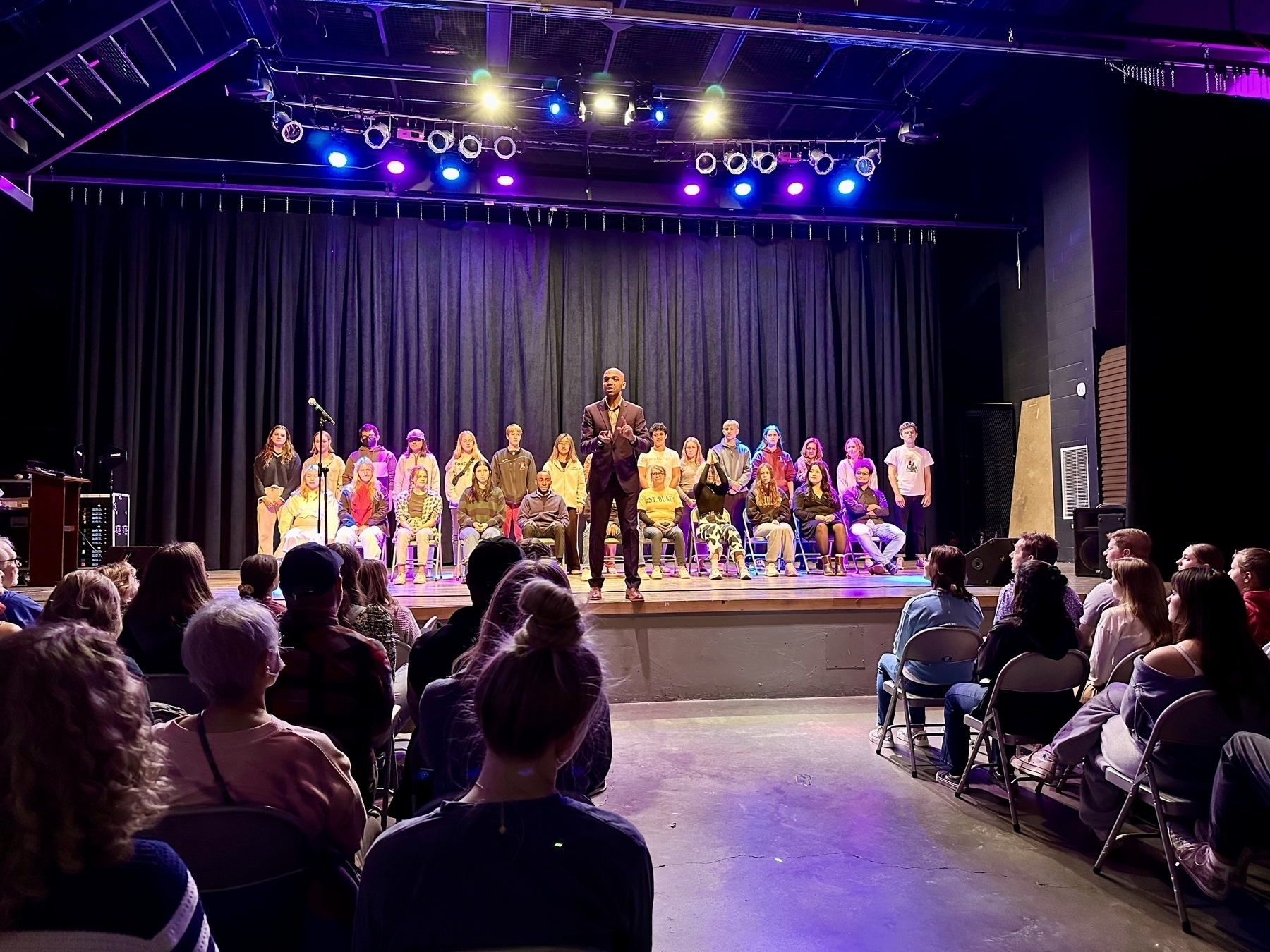
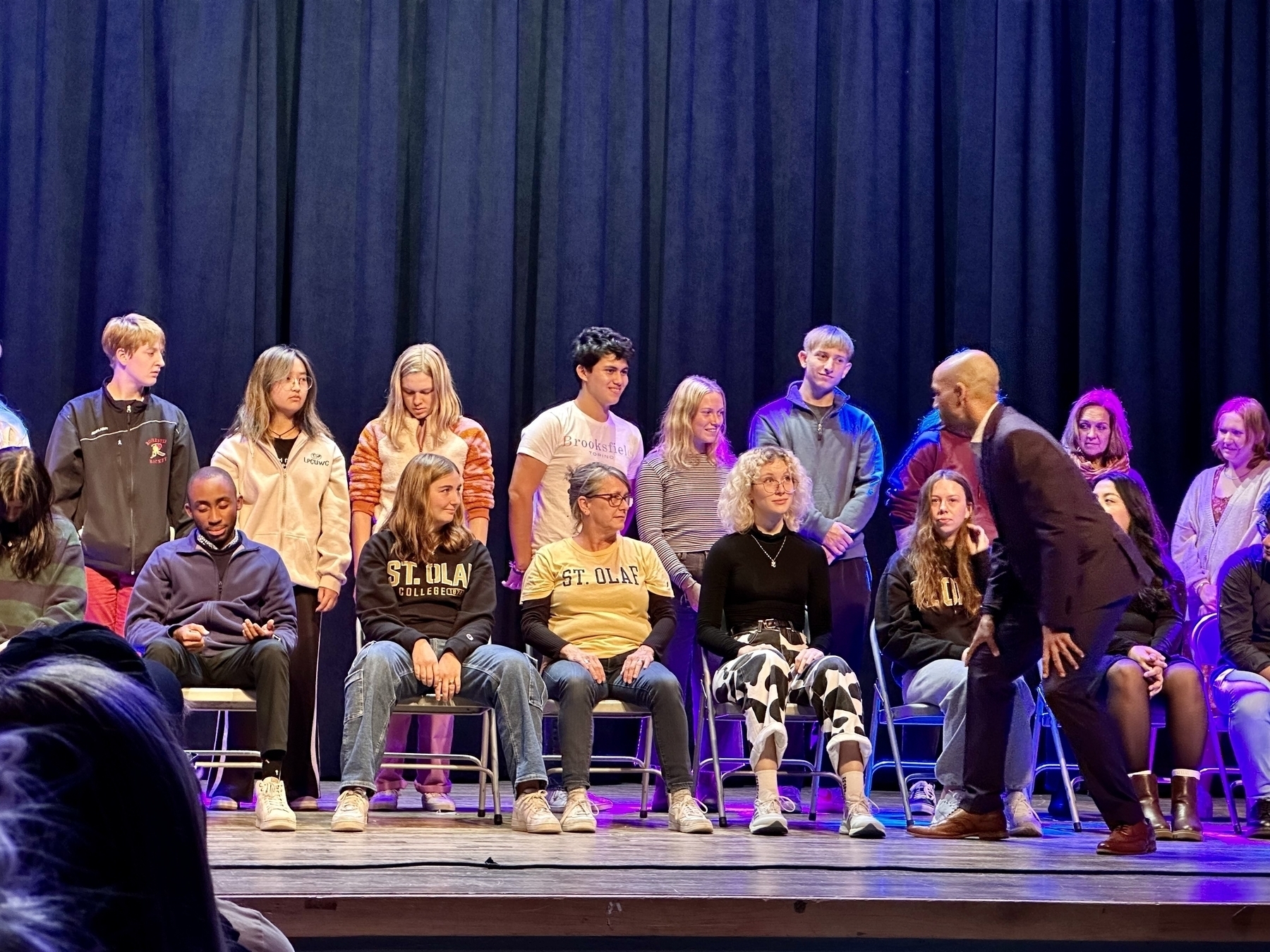
We got our Hoist 3-Tier Dumbbell Rack put together tonight. We ran out of room on the vertical rack, and the heavier dumbbells never fit right on that one. Nice to have easy access to everything. 💪

Had a fun evening at the 2023 Minneapolis Downtown Council Annual Fundraiser at Mosaic. #TeamSPS’s own Karin Lucas chairs the MDC board and addressed the crowed.

Scrambling to wrap up Tyler’s soccer game as a storm barrels in. Finished just in time. ⚽️⛈️


The conference rooms on #TeamSPS 5th floor in Minneapolis are named after Fictional Elements. To fill out the Fictional Element world even more, this Periodic Table of Fictional Elements was added recently and I absolutely adore it. 🤓


Squash Blossom Farm and Sod House Theater Dinner
We had a fun evening driving out to Squash Blossom Farm just outside of Oronoco, Minnesota for a Farm-to-Table dinner presented by the Sod House Theater group with funny skits and performances along with the meal. This was a truly unique experience!

The farm was pretty and very relaxed. The Sod House Theater had an accordian player to accompany the skits.


We tried two different meads and had one other drink.
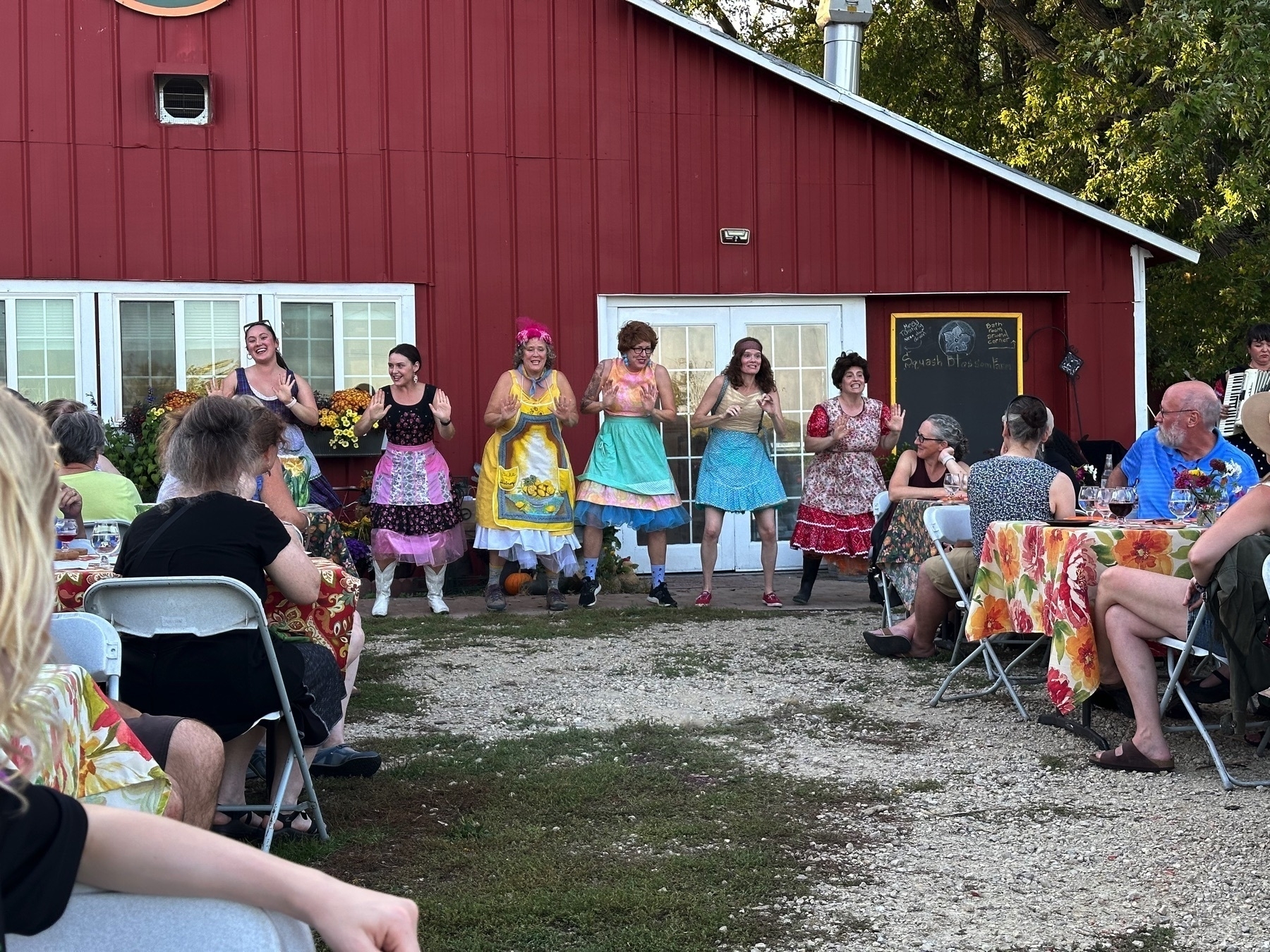
The performances were fun and goofy and made us all chuckle. You were right in the action.
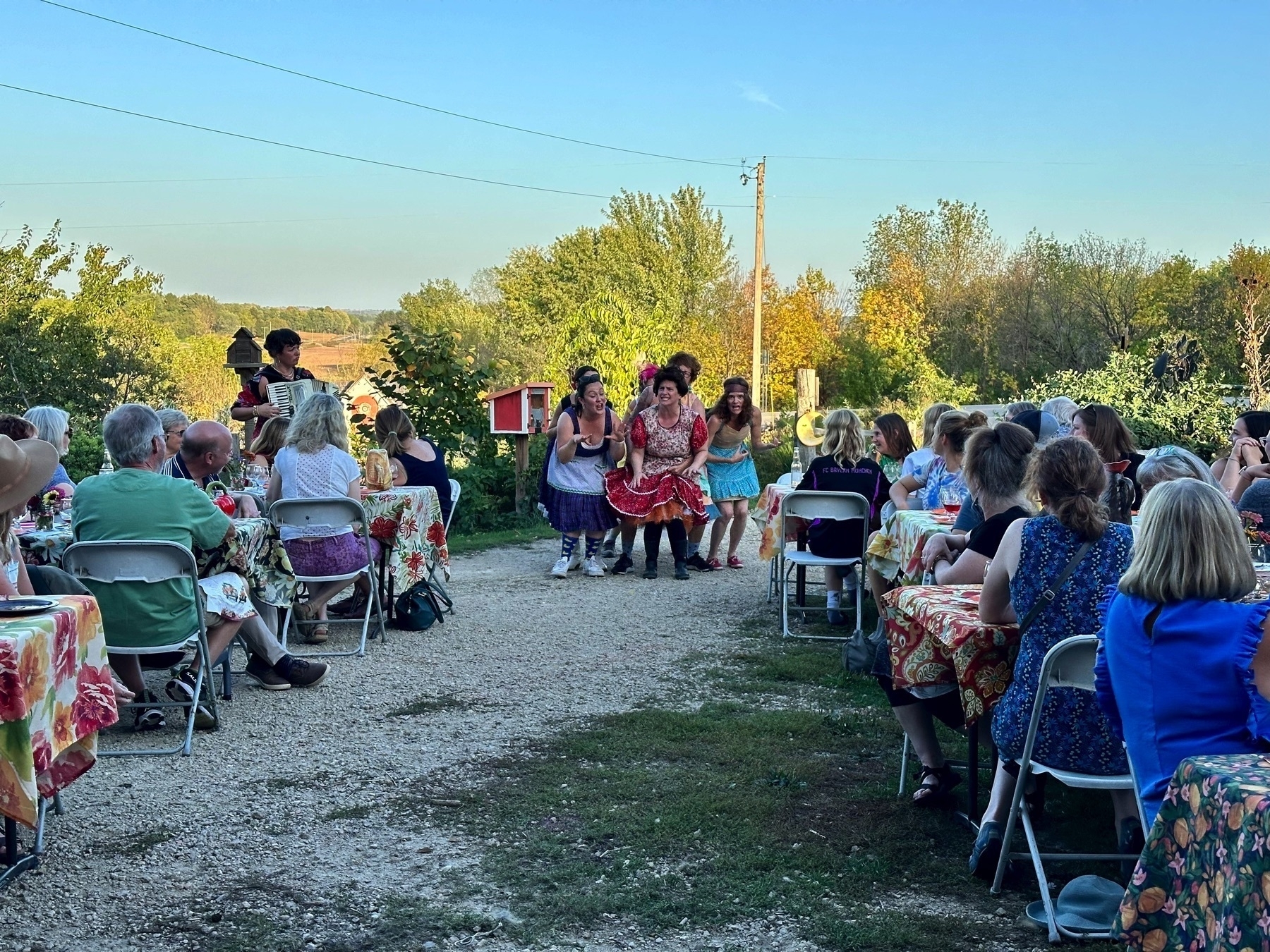

The meals were good and not too foody. Simple dishes served very well.

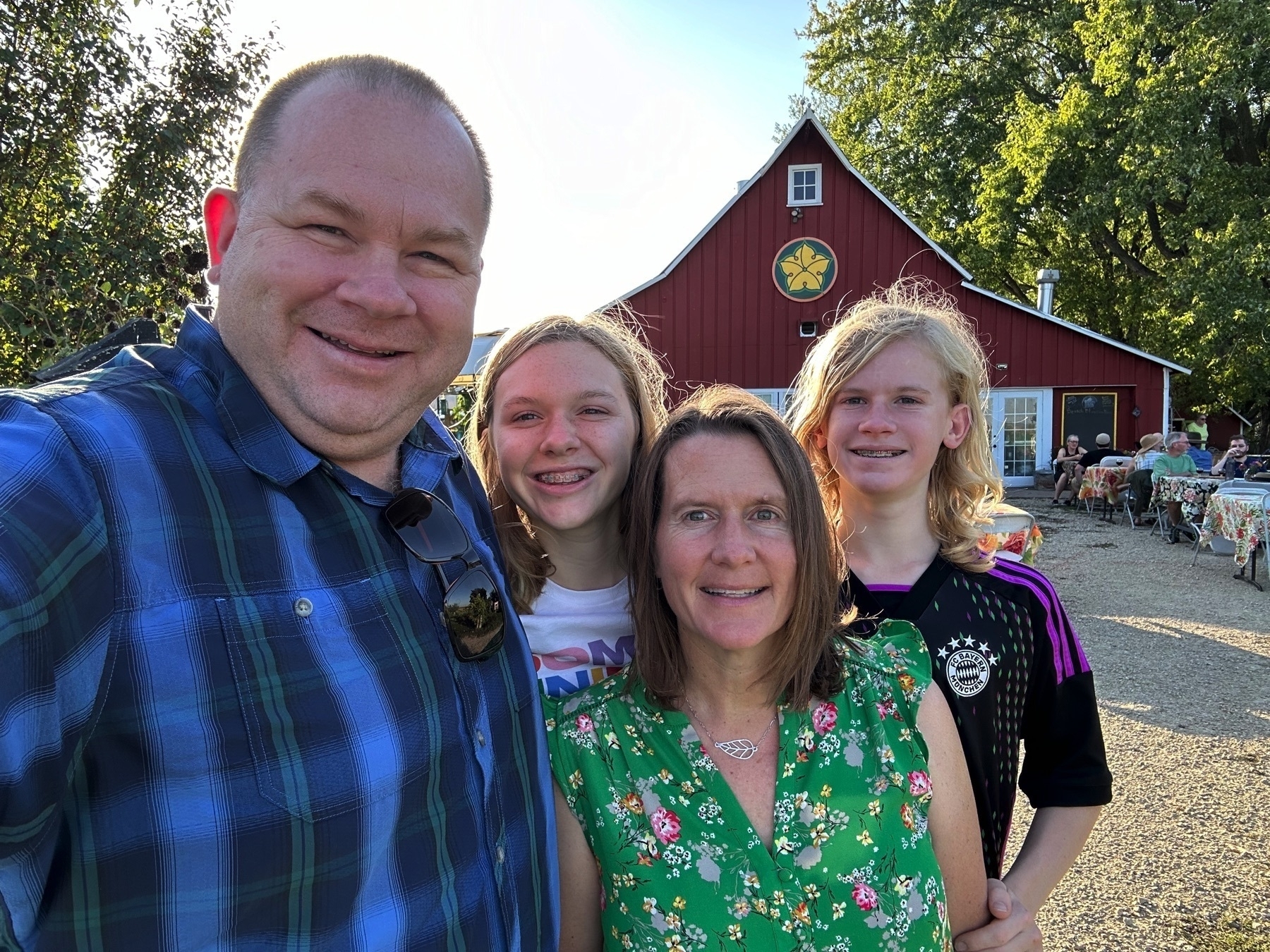
Switched things up with the 89 °F unusually hot day to get one last afternoon in the pool! 💦

Task Management for the Weekly Thing
I’m often asked about how I create the Weekly Thing and how I’ve been doing it for over six years. People are usually curious about how I find things to write about or how I build the Weekly Thing. However, there is a critical part that is invisible to others but key to the consistency of sending every week for 262 issues — project management!
With the recent rebuild of my automation I needed to update my project template which seemed like a good time to share how I do this. I’m a Getting Things Done practitioner, and my tool of choice for as long as I can remember has been OmniFocus. Everything here is in OmniFocus or supporting automation.
A detail to share on dates and times for the publishing schedule. My target for sending the Weekly Thing is Saturday at 7:00 am CT. If I miss that it’s fine, I can shift things. However, the content cutoff is actually Thursday at 11:59 pm CT and that never changes. This allows me a window from Thursday night to Saturday at 7:00 am CT to publish. One odd side effect of this is that a blog post I publish on Friday will not be in that issues Journal on Saturday, but will wait for the following week. Nobody seems to notice this and it is necessary for me to have the time to do the publishing.
Project
Here is what the project to send Weekly Thing 264 looks like in OmniFocus. The two dates on the right are the defer and due dates. Defer dates are critical for me since they keep things off my plate until they need to be. Note everything in gray is deferred. You can see that right now, there are only three tasks available. I’ve expanded select tasks so that you can see the helper links and text that make things a bit faster for me.
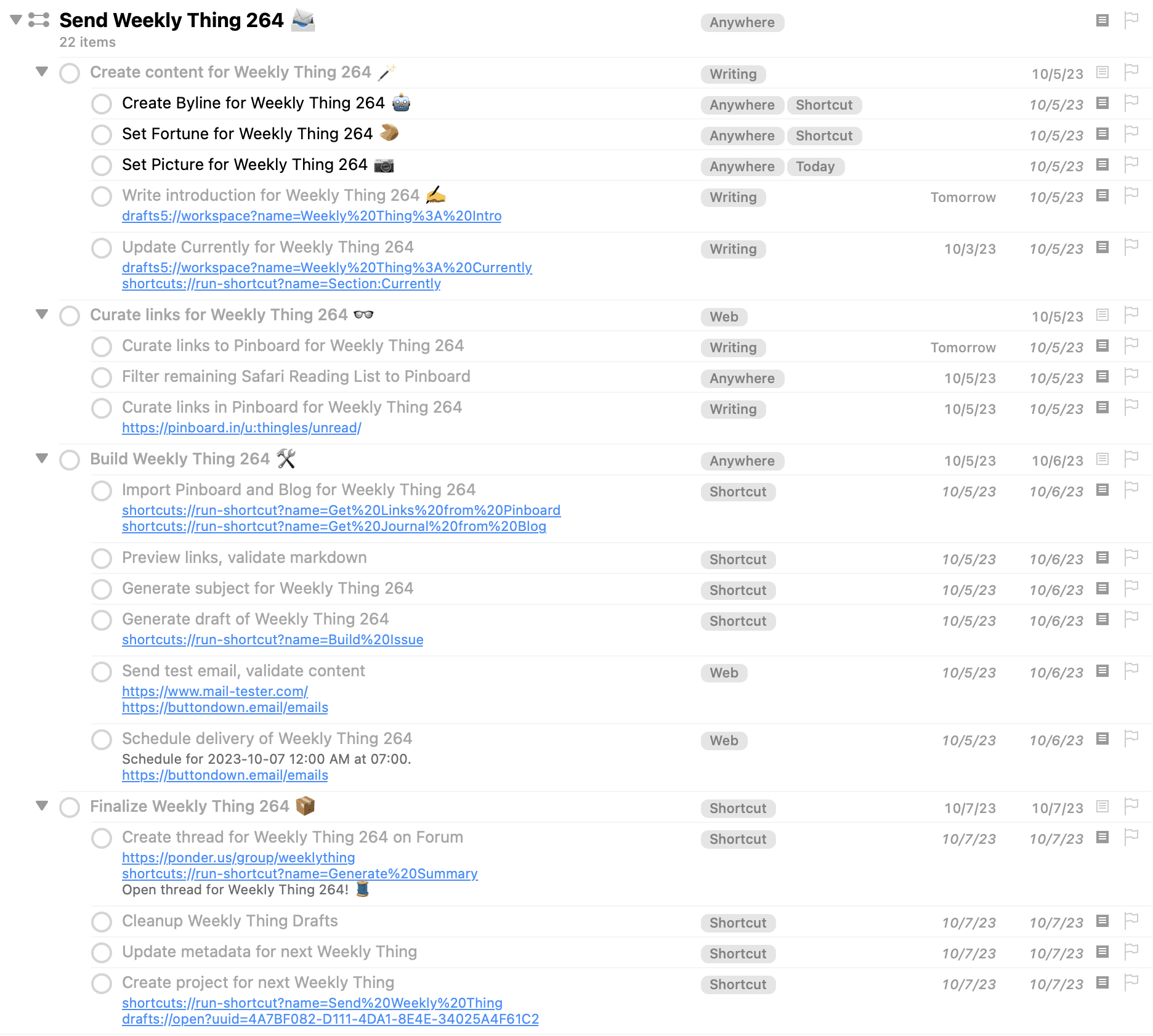
There are four major steps to publishing each issue:
- Creating Content: Most notable activities here include writing the introduction, adding any “Currently” topics, taking and setting the picture for the week. Some of these I can do immediately, others I defer until a few days into the week. The writing is done in Drafts.
- Curating Links: I try to curate links and various points through the week, but I have two “deadlines” for the publishing cycle. Links are curated in Pinboard.
- Building and Sending: Content and Links are done, time to build and send. I’ve automated this to be pretty simple. See how I build the Weekly Thing for more.
- Finalizing: After the issue is sent and in peoples mailboxes, I need to do some final activities and most importantly create the project for the next issue.
All of these steps are sequential. And the tasks in them are sequential, except for Creating Content which can be done in any order.
Repetition
This project is not a repeating project. That is the reason for the last step in the project, to create the next project. Why not repeating?
- Changes: Not having it repeating means I can change and alter any given instance however I like. I might add a special task to one issue, like adding a POAP for the anniversary issue. Or a special section I’m only doing that time.
- Schedule: I may move the due dates for one step or another and I love knowing that will not persist to the next iteration.
So how do I get the repeating project without doing all the work? Plus, there are tons of date references that need to be calculated, where does that come from? This is where TaskPaper and project templates come to the rescue.
TaskPaper allows me to have a template for sending the Weekly Thing that I can “run” via a Shortcut. You can see the Send Weekly Thing Taskpaper Template for all the details. Take note of two special “tokens” in the template: «Issue» and «Date». These are not part of TaskPaper, but instead two “variables” I handle.
Before I hand OmniFocus the TaskPaper to create the project, I’m going to process those two tokens using a Shortcut. My Send Weekly Thing shortcut will get the “Publish Date” and “Issue Number” from Data Jar. It will set those “variables” in the TaskPaper and the rest of the data offsets are magically handled by OmniFocus. Most critical thing here is making sure I format the «Date» as yyyy-MM-dd hh:mm aa so that OmniFocus understands it.
The Shortcut also puts a time block on my calendar for Thursday night to send the issue. This is a nice benefit of combining Taskpaper and Shortcuts together.
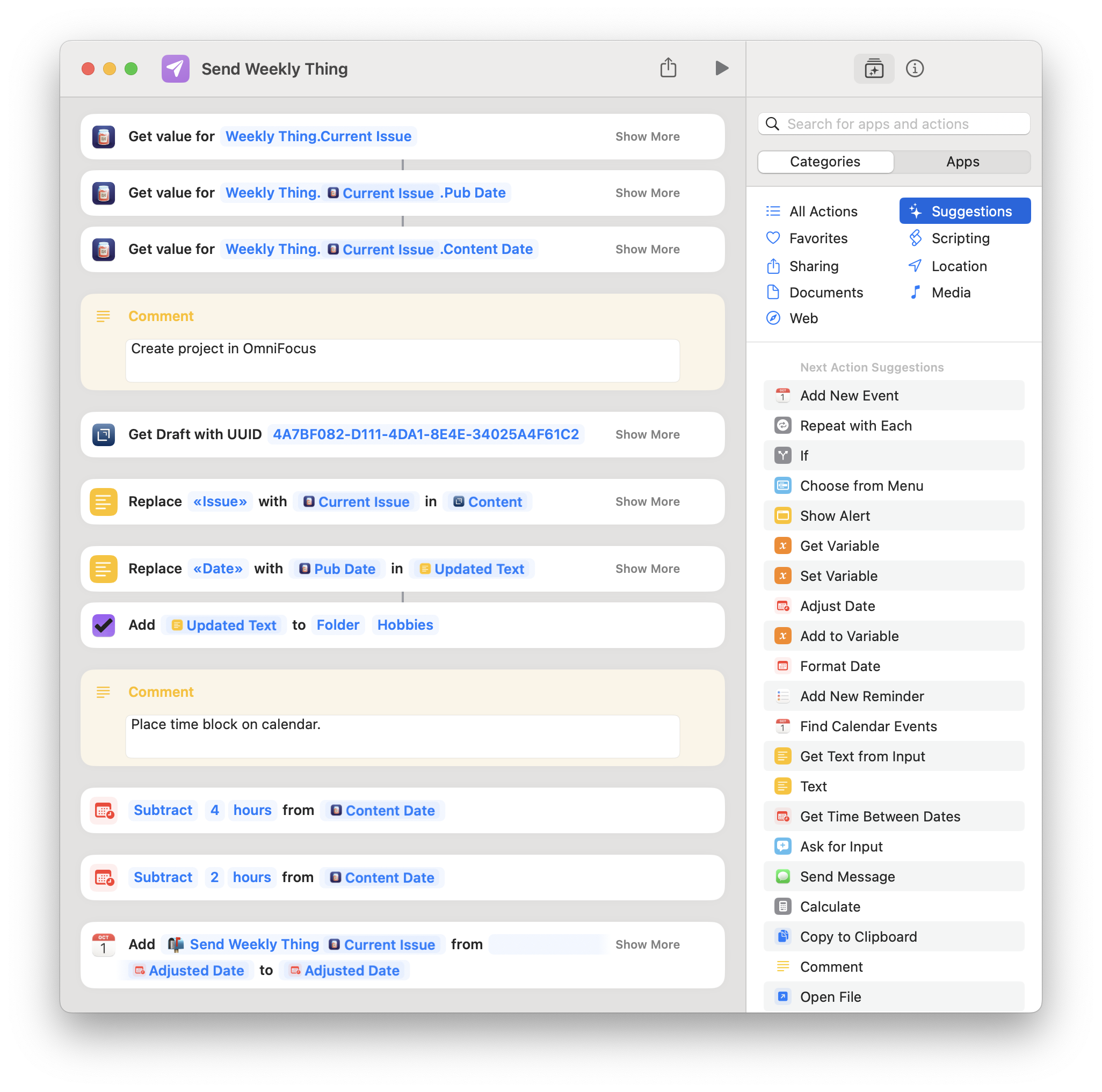
Summary
Creating the Weekly Thing isn’t a single “Send Weekly Thing” task on my list. Instead I’ve focused on “next action thinking” to try and make each component a simple task. Overall this works really well for me. It doesn’t solve writers block, but frees me up to focus on the creative aspects instead of the tasks.
You might be curious how this works when I take my summer or winter breaks? In those cases, I still create the next project for the issue when I come back from break, but then I set the defer date for the whole thing to the week before that issue publishes. I also usually add a housecleaning task to the beginning of that issue to clean out my Safari Reading list and Pinboard Unread links.
I received an email this morning from a service I have no recollection of informing me that their terms of service were updated. I have no idea what this service is. I looked in 1Password and have no entry record of it either, so it is very old. I don’t know the password on the account so I issue a password reset, just so I can then delete this account. It then requires me to provide a reason for cancellation. My reason is “This field should not be required.”
There should be a requirement similar to “1-click unsubscribe” but to delete your account.
We went to our last MN United game of 2023 tonight. They drew a 1-1 tie versus San Jose with plenty of scoring opportunities. It was a little sad realizing we wont be back to Allianz Field until 2024! ⚽️



Smooth Transition from Purchase to App
There is a very common gap in customer experience that is often ignored when you buy a physical product that has to be shipped to you and it has an app that you can use to interact or control it. This can go from a Smart home appliance all the way to a Tesla.
I still remember when I reserved my spot for my Tesla Model 3 and was excited to download the Tesla app only to realize that it wouldn’t let me do anything until I had my car. This is very common, and it is a let down because right at that time of purchase you are excited to get the thing, and are motivated to get things setup so you are ready for it to arrive.
I recently purchased an Eight Sleep system, and for the first time saw a company handle this hand off from purchase, to receipt and app well!
After I completed the order, Eight Sleep smartly directed me right away to download the application and get my account setup. Once creating my account, it knew that I had placed the order but didn’t have it yet, so it helpfully showed me the order status. Even better, in anticipation of the product arriving it also gave me a Checklist to get some things I will need to have on hand when the product arrives.
This is a great way to insure that:
- I get my account setup and have the app installed, ready for the arrival of the product.
- Make sure that I have everything I need so I’m not disappointed when it arrives.
- Smoothly handle the transition from new customer to app user.
Nicely done Eight Sleep!
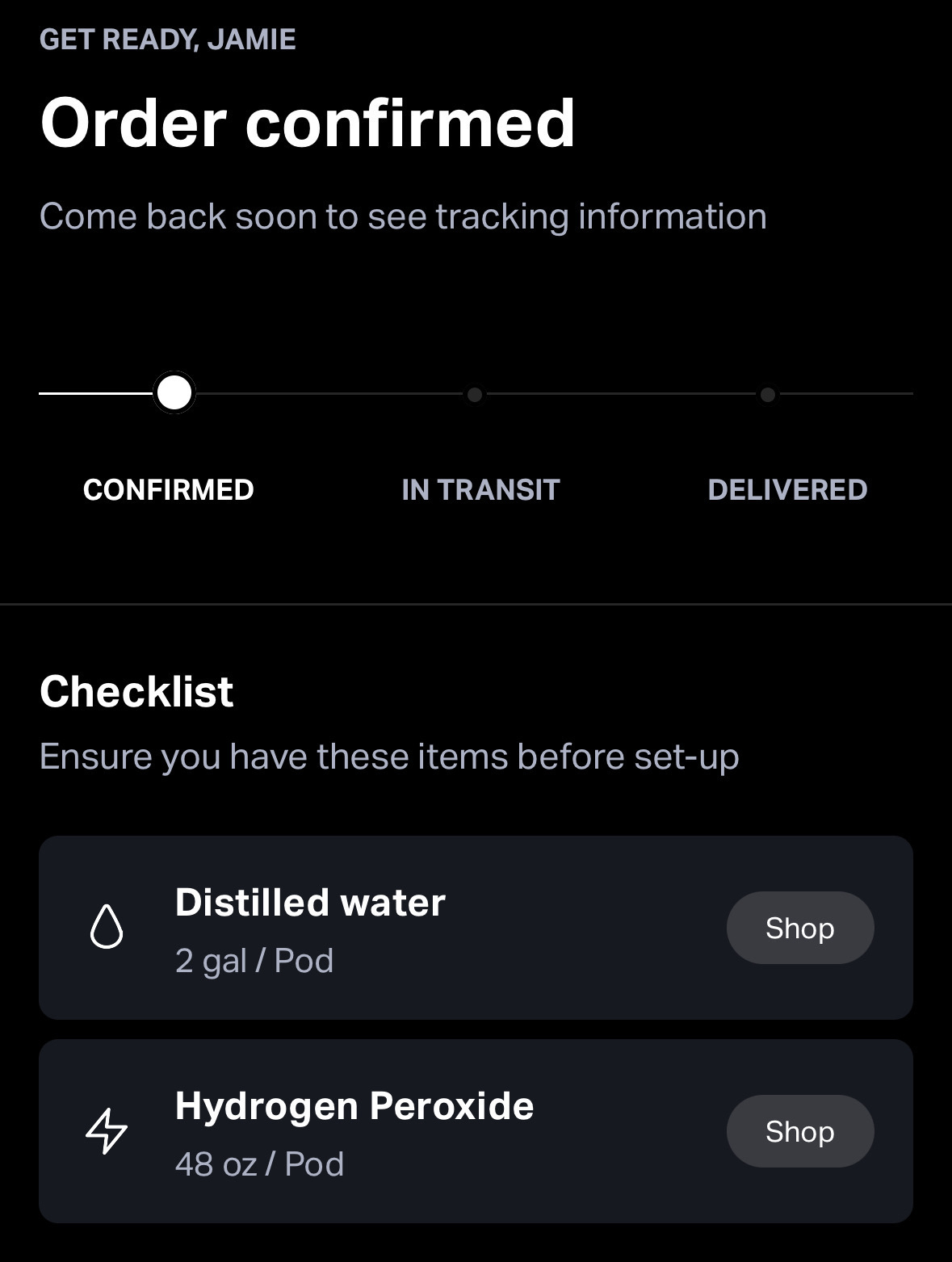
I created a Shortcuts Collection page to connect various blog posts I’ve written about Shortcuts and how I use them. Few posts so far, but thinking this is a topic I will write about more since I do so much with it.